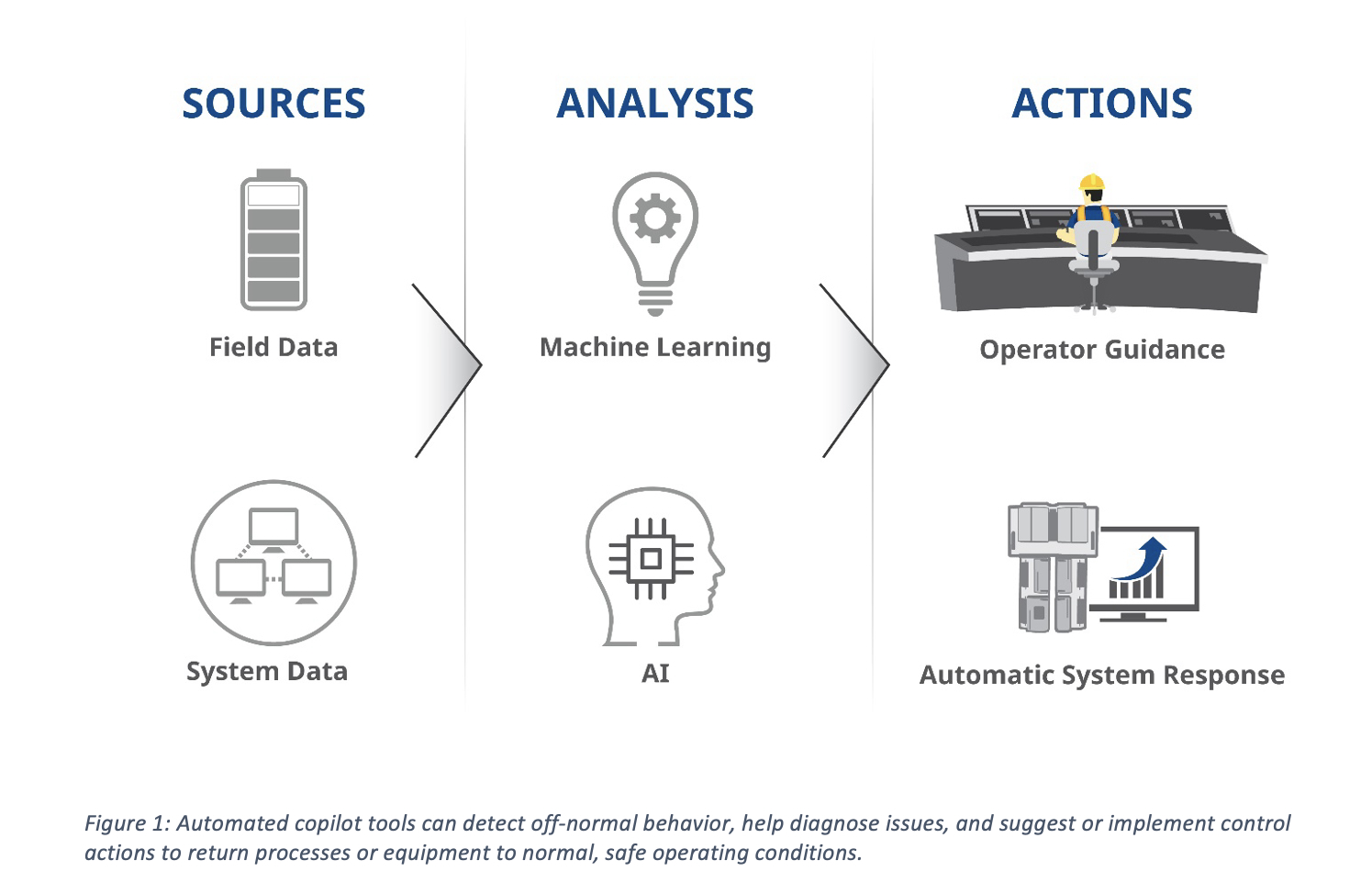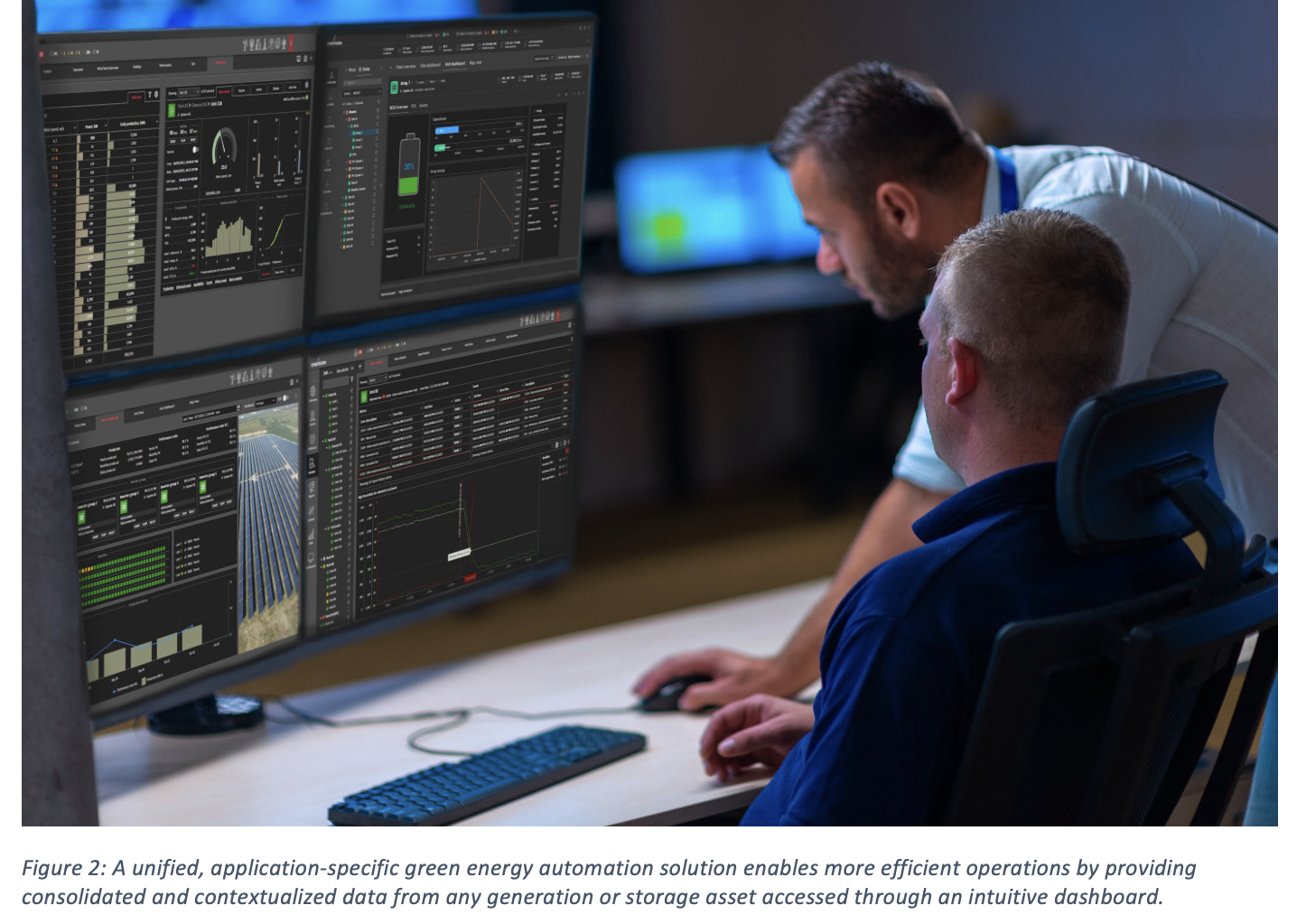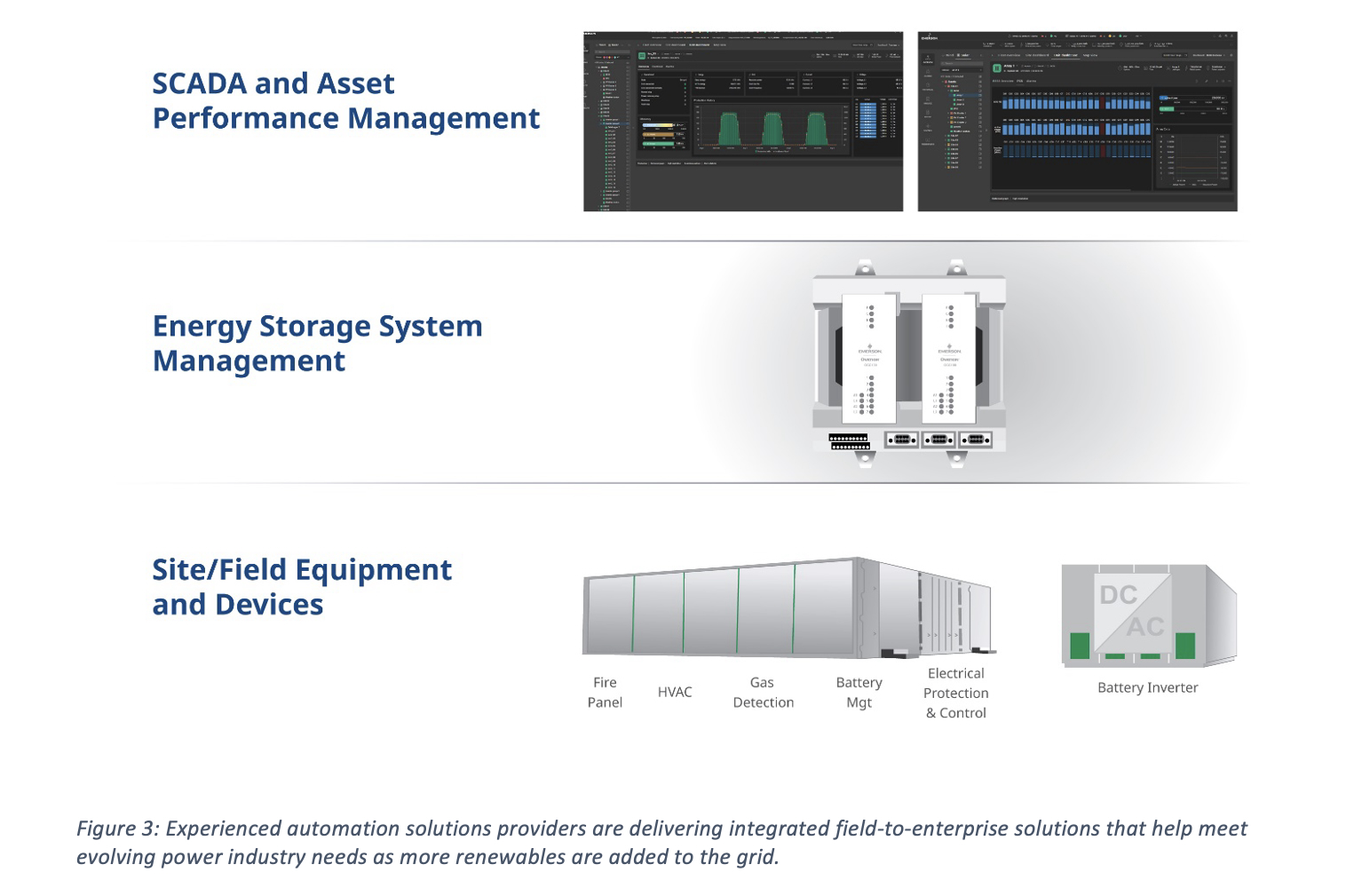New Technologies Supercharge Battery Storage Operation
Though battery storage for electric utilities has been the focus of much attention in recent years, the technology is not entirely new . Power generation and distribution companies have had access to battery energy storage systems for a long time. However, tying the controls of multiple batteries and systems together, and developing the control logic to make it work effectively and efficiently with the grid and fluctuating market demands, has been an incredibly complex and time-consuming process—one that often results in a fragile and fragmented automation strategy.
Further complicating operations is the fact that batteries are getting much bigger, resulting in more data and more complexity than ever, with today’s biggest batteries pushing storage capacity to hundreds of megawatt hours. These systems have many more variables to control, but they also rarely operate independently. Typically, the same companies managing battery operations also manage solar, wind, hydroelectric, and fossil-based generation assets, creating a perfect storm of complex operations.
Fortunately, emerging technologies are making the rise of battery operations more manageable. With the right solutions in place, an organization can more easily engineer and manage battery energy storage control, simplify monitoring and diagnostics, and increase visibility and ease of operations across the spectrum of assets, driving the operational excellence necessary to compete in the emerging renewables marketplace.
Simplified control configuration
Engineering teams creating control strategies for battery storage operations, such as inverter management and dynamic grid operation management, using traditional programming logic can find it unwieldly as it is difficult to develop from scratch, and difficult to maintain.
Today, however, automation solutions providers with deep energy industry expertise have developed battery algorithm suites that take common battery control elements and standardize them in a set of pre-generated function blocks designed specifically for battery energy storage systems. These function blocks can monitor market conditions and demand on a facility’s batteries, and they can help coordinate operation across all the cells and racks in the battery system.
Pre-generated, out-of-the-box logic elements provide engineers with the framework they need to get battery operations up and running quickly. Each algorithm offers basic functionality that can be customized to meet a facility’s own unique operations. The algorithms plug directly into the control system to interface with the battery management system, the inverters, and the grid, automatically coordinating charge and discharge cycles, and linking that activity with grid operations to manage battery demand efficiently and effectively.
More effective monitoring
Once owners or operators have the control logic in place, they need to consider long-term health, safety, and reliable operation of the storage facility via diagnostics and monitoring. In most cases, personnel will be monitoring the battery array’s operation, but they likely will not be onsite because most facilities now operate from remote control centers. In addition, battery monitoring can be complex, with many variables to watch, and issues such as thermal runaway, that can escalate quickly. Ideally, companies want a solution with the visibility and response time of having a team onsite, but without the need for personnel to actually reside at the facility, as sites are often remote, and worker shortages make finding enough personnel with expertise difficult.
Fortunately, automation suppliers are responding to this need, developing solutions to provide continuous monitoring of batteries. AI-based solutions continuously monitor operations for expected performance and report findings to the operator, identifying off-normal operations, and helping operators more quickly identify root cause and potential remedies.
The primary advantage of these AI tools is their ability to sift through massive amounts of data quickly and easily. Automated “copilot” tools can parse these types of extensive multivariate data for their human pilot and catch emerging trends, empowering teams to stay far ahead of serious battery issues. The tools can identify small deviations long before they develop into critical failures, providing the maintenance team plenty of time to react. And because the AI works 24x7, 365 days a year, it can ensure teams do not miss issues because of staffing shortages, vacations, or because an operator is focused on another screen. AI can also help teams track long-term degradation of batteries, and provide more accurate state of charge estimates, allowing teams to work with wider battery system parameters (Figure 1).

Moreover, as operators and their AI copilots collect more data on battery health, they can make more optimal long-term decisions for when to drive batteries harder. Because the team will have a better overall sense of the health of its assets, it will have an easier time deciding how to balance increased performance against wear and tear on equipment.
Bringing it all together
Even with control logic effectively engineered and standardized, and maintenance and diagnostics tools in place, battery energy storage systems will still generate a lot of data. Further complicating operations is the fact that battery systems will typically run alongside other operations, such as wind and solar, that will generate their own massive data flows. With so much data from different sources, operators will need a way to bring everything together so they can make quick decisions, without having to learn a dozen different tools and spend time switching among them.
A single, unified green energy supervisory control and data acquisition (SCADA) software solution can be the difference between operational complexity and operational excellence. A unified green energy SCADA solution consolidates all an organization’s data into a contextualized single pane of glass with intuitive dashboards, making it easy to train operators, and making it easy for them to efficiently manage assets to make better, faster decisions (Figure 2).

Automation is the foundation
As more power generators and distributors adopt battery energy storage into their renewables portfolios, they will need effective tools to help manage the more complex operations and significant increase in data (Figure 3).

Today’s most experienced automation solutions providers are delivering these technologies, relying on decades of expertise and innovations in data handling, engineering, and AI to develop solutions that will continue to meet the evolving needs of the power industry as it adopts more renewable energy.
 Rick Kephart has over 30 years of automation experience in the power and water/wastewater industries. Over his career, he has become an expert in control systems and theory, embedded systems and real-time systems. Rick currently serves as the vice president of technology for Emerson’s power and water solutions business. In this position, he leads the global power and water technology organization and is responsible for shaping its technology architecture, strategy and direction for the Ovation platform and the entire power generation and water system stacks. Previously, Rick was the vice president of software solutions and responsible for managing a global organization handling the development of all software related to the Ovation automation platform. He holds a B.S. in electrical engineering from Penn State University and an M.S. in electrical engineering from the University of Pittsburgh.
Rick Kephart has over 30 years of automation experience in the power and water/wastewater industries. Over his career, he has become an expert in control systems and theory, embedded systems and real-time systems. Rick currently serves as the vice president of technology for Emerson’s power and water solutions business. In this position, he leads the global power and water technology organization and is responsible for shaping its technology architecture, strategy and direction for the Ovation platform and the entire power generation and water system stacks. Previously, Rick was the vice president of software solutions and responsible for managing a global organization handling the development of all software related to the Ovation automation platform. He holds a B.S. in electrical engineering from Penn State University and an M.S. in electrical engineering from the University of Pittsburgh.
Emerson | https://www.emerson.com/global
Author: Rick Kephart









